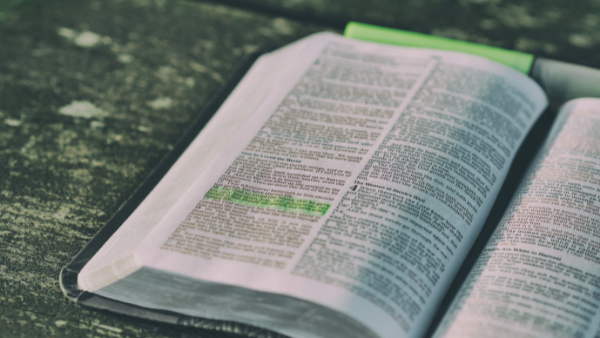By James R. Strange, Ph.D.
Professor of biblical and religious studies, Samford University
Jesus Opened My Eyes to the Truth
John 9:1–7, 32–33, 35–38
Today we read the second story of a healing on a Sabbath. The present miracle violated the Sabbath because making mud was analogous to working with clay, but both healings led to the weightier issues of Jesus’ identity and people’s faith in Him. This is a frequent, even constant theme in John.
Many regard this healing as the fifth of seven signs in the Gospel of John.
John calls Jesus’ deeds of power “signs” because they are meant to reveal who Jesus is, and hence to confront people with two questions: Do you believe Jesus is the Son of God who reveals God? Will you join in doing God’s work?
Jesus brought glory to God by what He did for me. (1–7)
As He is for much of the Gospel of John, Jesus is in Jerusalem. The Siloam pool of Jesus’ day, which served as a collection basin for water brought inside Jerusalem’s walls, was excavated south of the Temple Mount in 2004.
The disciples may have asked the question in verse 2 because of what Jesus said to the man healed by the pool of Bethesda in John 5:14.
Many translations supply a clause in verse 3 that isn’t in the Greek: The CSB says, “this came about,” and the NIV says, “but this happened.” An alternative that is more faithful to the Greek reads, “Neither he nor his parents sinned, but we must do the works of the One who sent Me while it is day so that the works of God might be revealed in him.” Notice Jesus’ use of “we” — the disciples are also to reveal God’s works through their deeds.
By calling Himself the Light of the World (8:12), Jesus echoes John 1:4–9. He equates Himself with the light that God spoke into being on the first day (Gen. 1:3–5) before creating the sun, moon and stars on the fourth day (Gen. 1:14–19). Therefore, this first light — Jesus Christ, the Word — is not mere illumination but a radiance that reveals who God is (theology) and what God is doing in the world (ecology).
I could see that God was at work through Jesus. (32–33)
In verses 8–32, a series of investigations reveal it was Jesus who restored the man’s sight. The man gives compelling testimony in verse 25. Note that despite his ignorance about Jesus, what Jesus had done was enough to bring about his faith. Others, however, can’t get past what they do not know (v. 30).
In John, faith is not knowledge. Whereas those questioning the man want knowledge before they will believe, the man is willing to begin with faith.
Biblical stories like these probably lay behind Augustine of Hippo’s teaching, “Believe that you may understand,” and Anselm of Canterbury’s phrase, “faith seeking understanding.”
Jesus opened my eyes to see the truth about Him. (35–38)
Like the Samaritan woman (4:19) and the woman whom Jesus forgave (8:11), this man inadvertently calls Jesus “Lord” before confessing his faith (“Sir” in v. 36).
The imagery in verses 39–41 becomes confusing, but it is clear that Jesus wants the people He encounters, and John wants his readers, to move from blindness to sight, from ignorance to understanding.
Faith provides the motion. John talks about two avenues to understanding. One is by our own encounters with Jesus, so we join the man in saying, “One thing I do know, that though I was blind, now I see.” Another is through the testimony of others whom Jesus has touched and healed and a willingness to see God at work in their lives.
Both avenues move us toward full understanding, reached on that day when we will not need to ask Him anything and our hearts will rejoice (16:22–23).



Share with others: